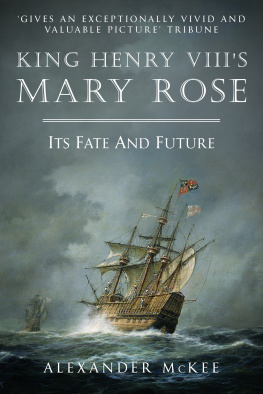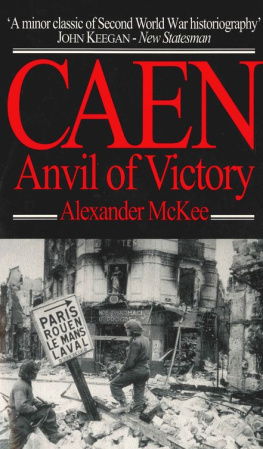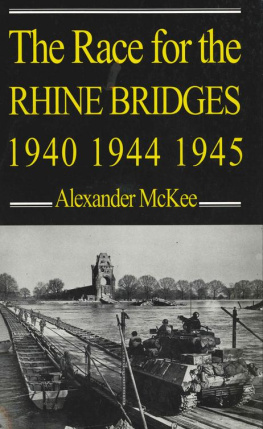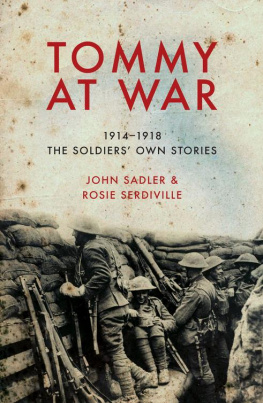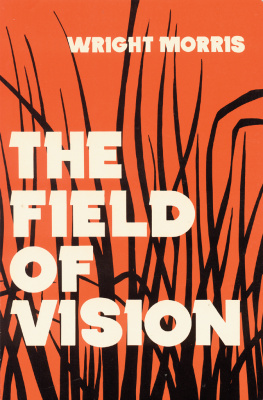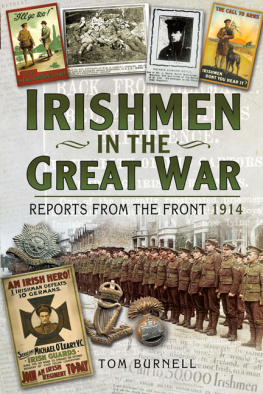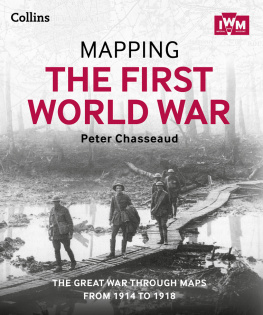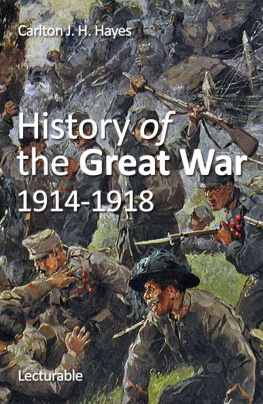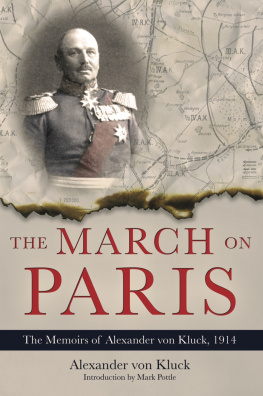The Friendless Sky: The Great Saga of War in the Air 1914-1918
Alexander McKee
Alexander McKee, 1962
Alexander McKee has asserted his rights under the Copyright, Design and Patents Act, 1988, to be identified as the author of this work.
First published in 1962 by Souvenir Press Ltd.
This edition published in 2016 by Endeavour Press Ltd.
Table of Contents
Prologue
It is finer to fall from the chariot of the sun than to trundle safely home in a cab . GAUTIER
You can start right in the thick of things. Do you see that German staffel over there? Its Richthofens. Have a look through the glass the red machine is his.
Leutnant Schrder stepped forward to the telescope of the observation post he was to take over that bright morning from the obliging Leutnant Lassky. Away in the haze in front of him were Armentires, Ypres, Wytschaete, Kemmel. And near Mount Kemmel was a cloud of tiny specks, approaching. The English, said Lassky. Therell be something to report in a moment.
Schrder put his eye to the big, mounted telescope. For a moment, he could see only sky. Then the English machines came startlingly into focus, almost brought up to him by the power of the lens. Light flickered on the wings of the leader; it was turning and the others were turning with it.
Hah! exclaimed Lassky. Theyve recognized the red machine!
Richthofen was diving, streaking ahead of his staffel. The English were diving, too, going away hard for the ground; but the red fighter was far faster, it was closing the distance. No sound came from its guns. One hundred and fifty yards. The very silence was deadly. One hundred yards. Still Richthofen closed the distance. Then, when he seemed to be almost touching his victim, there was a short burst from the twin machine-guns, a distant rattle in the morning air.
With horror, for he was an airman himself, Schrder watched a wing detach itself leisurely from the English machine. There was a sudden streak of flame, flaring like a comet, from the fuselage. The burning plane reared up against the sun, as if trying to climb the sky, and then fell away, drifting rather than falling downwards, like a fragment of blazing newspaper.
From it fell two dots, hurtling earthwards far faster than the machine which had carried them into the sky. They were directly in focus. Schrder could see bodies spin around, the outstretched arms, the fingers wide apart. They whirled down from 9,000 feet, until they hit the ground between the British and German lines, and Schrder saw every second of their fall. He had already had his fill of war flying, and this was too much. He turned away from the telescope.
There was a thunderous roar overhead. The six German fighters were returning. The red machine was in the lead. The pilot rocked his wings and waved to the men on the ground.
His fifty-sixth victory! Simply marvellous! exclaimed Lassky. But, good Lord, whats up with you?
Horrible, gasped Schrder.
Well, youll have to get used to it. Thats our daily job our hourly job, I should say.
*
The golden age of air fighting lasted barely two years. Before 1914, only a few rash, logical spirits dared to contemplate combat in the clouds. After 1914, their energies were spent trying to devise ways and means to fight in the air with machines not designed for that purpose, and therefore totally unsuitable, so that, when enemy airmen did meet, they danced around each other like blind-folded boxers with broken thumbs. But by 1917, the machines were adequate and the methods had been found. The vicious, snarling dogfight the sudden blaze of hectic action the rocketing chaos of diving, climbing fighter planes chasing each others tails, never holding a straight course for more than a few seconds in case anyone else should get in a fatal burst this legend was born in 1917, and has lasted ever since. Its salient attribute was its almost total inconsequence.
Except on a few a very few occasions, it hardly mattered who won. The influence of air power on ground operations was minimal. Air fighting could be and often was carried out as a sport, the supreme sport; a joust between knightly heroes in the unsullied lists of the upper air, in the public arena of the sky, with entire armies as their witness and, at one remove, whole nations to cheer on their champions. If a champion died, a nation might and sometimes did go into mourning for the fallen youth; but it never contemplated going into the air raid shelter. That was the difference.
Like a crowd at a bullfight, nations partook of glory at second hand; and died in imagination only. There was little danger of the bull crashing the barriers and erupting among the spectators, maiming and slaying in a bloody reality. Consequently, the men risking their lives in the great arena were allowed their little gestures of chivalry, their salutes to a gallant opponent, their tributes to the slain and the comrades of the slain.
So this too became part of the legend, never precisely to be repeated; the formal ballet of the bullring evolved only too quickly into the more serious spectacle of a handful of matadors trying desperately to hold up the thunderous charge of dangerous animals upon the audience. To give them their due, when that day came the spectators also had their hour of glory. But they would hardly have welcomed at that moment a courtly word of praise for the courage and power of the foe, or the laying of a wreath upon his grave, when eventually he was defeated.
The air fighting of the first world war has become, therefore, a thing apart; a strange interlude, locked into history in all the shining colour of a butterfly somehow embalmed in Flanders mud, gaining brilliance from the vast and sordid background of anonymous butchery. Youths of eighteen almost overnight became national heroes, streaking into the heavens like brief comets, leaving behind only a name and a legend, when, all too often, they fell again to earth. They seemed to rise of their own accord, for none thought to ask why they died, or who planned their operations, and gave the orders. No one was interested. It was not a time for generals, but for aces. And they did not disappoint their audience.
If they flew as observers or gunners, they might be men; if they were pilots, and particularly single-seater pilots, they were, with few exceptions, mere boys. In high-speed combat, maturity was a diminished asset. Good eye-sight and lightning reflexes were vital; the man who took time out to think, was dead. Few were militarists; for most, whatever their nationality, flying was a welcome, keenly-desired escape from the routine of armies, a protest written across the sky for all to see, a conscious defiance. Merely by volunteering to fly, they set themselves apart. The successful ones were always excellent shots, but rarely stunt pilots; sometimes they were not even very good pilots. Many were horsemen or drivers of fast cars. Some, including some of the greatest, were poor physical specimens. Others were nervous or melancholy, reserved, shy, kept rabbits and played the violin, but deadly fighters nevertheless, for outward appearance was nothing. Success was a matter of inward spirit. They often talked, on both sides of the lines, of after the war but that was a conscious daydream. There was only today. They had exchanged a hypothetical future for a present so intense that a few weeks was a lifetime. And for many, those few weeks were all the life they had left to them.
Their spirit was that of the small boy taken to his first meet of the local foxhounds, who was disappointed when he learned what this formidable, bright array of horsemen and animals were going out to engage. Only a poor little fox, he said. I thought they were going to catch lions.


